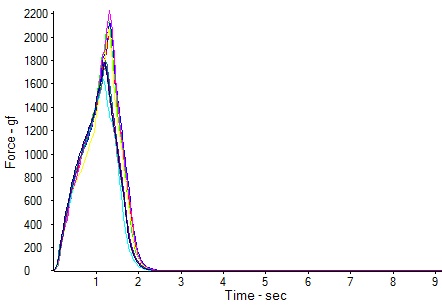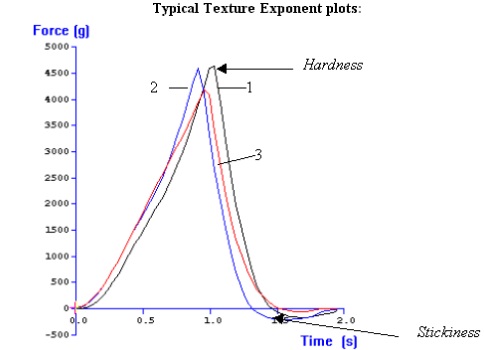Rice noodle products are products made from rice and flour as raw materials, which are processed by rough processing and uncooked rice noodles. It mainly includes noodles, cut noodles, macaroni, dragon's noodles, rice fans, rice cakes, etc.
Rice noodles are important products that we eat, and their quality is directly related to their health. Therefore, the state has strict regulations on its health standards. Common indicators that reflect their quality are hardness, viscosity, freshness, firmness, brittleness, shear, and water retention.
At present, the determination of its indicators is mostly chemical reaction and national standard methods. For example, Zhang Jing [1] summarized the method of rice freshness and compared it. He concluded that the use of the diacid base indicator method for fresh rice The degree of measurement is more accurate. Liu Rui et al [2] collected 99 samples of noodles from 39 large-scale noodle production enterprises nationwide to understand the quality status of Chinese commercial noodles. The chewability and viscosity were measured by Baosheng TA.XTC texture analyzer. Finally, it is believed that the chewing and stickyness of buckwheat noodles is significantly higher than that of ordinary noodles and egg noodles. The chemical method not only has a detrimental effect on the sample itself, but also has a certain cumbersome operation, and the obtained data is not accurate enough. Therefore, it is imperative to improve the measurement method of the characteristics of the rice noodle product.
Baosheng TA.XTC Baosheng TA.XTC texture analyzer has become a research food in most universities, research institutes, food industry and food institutions due to its simple structure, convenient operation, high detection precision and stable performance. A common tool for physical properties. Using the Baosheng TA.XTC texture analyzer to measure some indicators of the quality of the reaction meat products, it is not only easy to operate, but also saves time in the processing of the data. The processed graphics can reflect the quality of the meat products very intuitively. Good or bad.
Share with you the specific application of the Paulson brand TA.XTC texture analyzer to test the freshness of rice and the hardness and viscosity of noodles.
Determination of rice freshness:

In this experiment, the freshness of rice was measured using a TA/2 cylindrical probe using a Paulson TA.XTC texture analyzer . The test parameters are: before and during the test, the speed is 0.5 mm/s, the speed after the test is 1.0 mm/s, and the 5 kg force sensor is used. Before the measurement, try to pick the rice with the same size and the same amount of “abdominal whiteâ€. Place the rice in the middle of the probe. After debugging the calibration machine, start measuring the freshness of the rice. When the probe senses 5g force, the probe starts. Press the sample 25% of the distance. At this point (most likely to get the maximum force), the probe returns to the starting position. The wave force can be seen as hardness. The higher the value, the harder and firmer the sample is, and the positive area represents the work done by the probe to press this distance. The hardness of rice grains is determined by the content of protein. The higher the hardness of rice, the higher the protein content and the better the transparency. Generally, the new rice is harder than the rice, the rice with low moisture is higher than the rice with high moisture, and the late rice is harder than the earlier rice. It can be used to compare whether rice is new rice under the condition that the remaining conditions (moisture, time) are consistent.
The measurement results are shown in the figure. It can be seen from the picture that the peak height is harder and stronger, so the sample is new rice and the other is Chen rice.
Determination of viscosity and hardness of noodles:

In this experiment, the hardness and viscosity of a 35 mm column probe (P/35 for noodles) were measured using a Paulson TA.XTC texture analyzer . The test parameters are: before, during and after the test, the speed is 2.0 mm / s, using 5 kg force sensor. Before the start of the experiment, the zero point must be calibrated, and the two noodles should be placed side by side under the probe to start the experiment. Once the force sensing element senses a force of 10 g, the curve begins to record the entire process of pressing the sample. The maximum force indicates the hardness of the sample. The larger the value, the greater the hardness. In the comparison of the maximum force, the difference between the two types of noodles is not very obvious. However, it is clear that the third noodle is less sticky than the first two. It should be noted during the experiment that when placing the sample on the platform, the surface of the sample must be flat. If the sample is bent, the force sensing element will sense the data and start recording. The data will be in error and the sample should be placed in the same position each time.
We hope that the information we provide will be helpful for your research, and we welcome you to contact us to learn more about our product information. Finally, thank you very much for your support and wish you a happy life and a smooth job!
1. Zhang Jing. Comparison of Several Methods for Detecting Freshness of Rice[J].啤酒科技.2003(08).
2. Liu Rui, Zhang Yingquan, Zhang Bo et al. Study on the physicochemical and cooking characteristics of Chinese noodles[J].Journal of China Food Science.2015:(06).
Guangzhou Zhongzhinan Supply Chain Co.,Ltd. , https://www.gzzhongzhinan.com